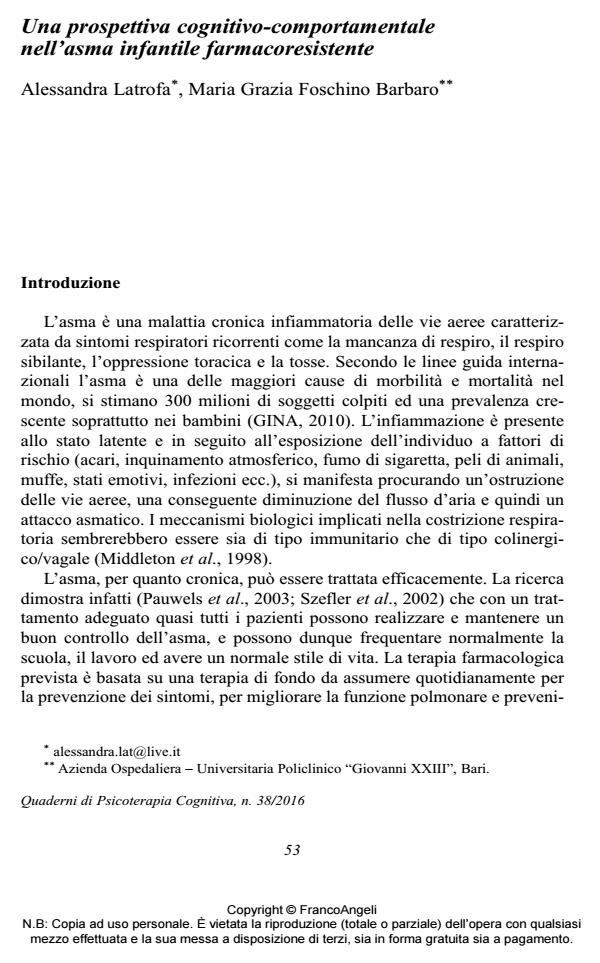A cognitive-behavioural prospective in difficult to treat childhood asthma
Journal title QUADERNI DI PSICOTERAPIA COGNITIVA
Author/s Alessandra Latrofa, Maria Grazia Foschino Barbaro
Publishing Year 2016 Issue 2016/38
Language Italian Pages 19 P. 53-71 File size 144 KB
DOI 10.3280/QPC2016-038005
DOI is like a bar code for intellectual property: to have more infomation
click here
Below, you can see the article first page
If you want to buy this article in PDF format, you can do it, following the instructions to buy download credits

FrancoAngeli is member of Publishers International Linking Association, Inc (PILA), a not-for-profit association which run the CrossRef service enabling links to and from online scholarly content.
Asthma is a chronic inflammatory disease of the airways, and it is one of the leading causes of morbidity and mortality in the world. According to international guidelines, that provide a protocol based on co-partecipation end empowerment of the patient, the international literature shows the existence of a series of educational intervention programs centered on the transmission of information that make the patient able to actively cope with the disease. Despite the proven effectiveness of these programs, there are many cases of asthma considered "difficult". The objective of this paper is to analyze some studies whose focus on the psychological aspects involved in the control of asthmatic disease. The presence of dysfunctional mental representations about bodily sensations and disease seems to have a strong impact on the quality of the perception of somatic symptoms. At the same time the presence of anxious and depressive symptoms seems to adversely affect the lung function, and then the severity of asthmatic pathology. The analysis of international literature emphasizes the importance of integrated intervention to promote a good control of the disease, thus improving the quality of life and health status, as the biopsychosocial paradigm conceptualizes.
Keywords: Childhood asthma, perception of symptoms, anxiety, depression, cognitive restructuring
Alessandra Latrofa, Maria Grazia Foschino Barbaro, Una prospettiva cognitivo-comportamentale nell’asma infantile farmacoresistente in "QUADERNI DI PSICOTERAPIA COGNITIVA" 38/2016, pp 53-71, DOI: 10.3280/QPC2016-038005